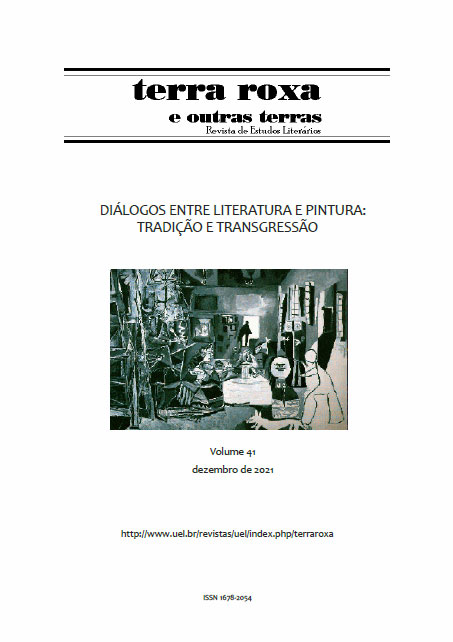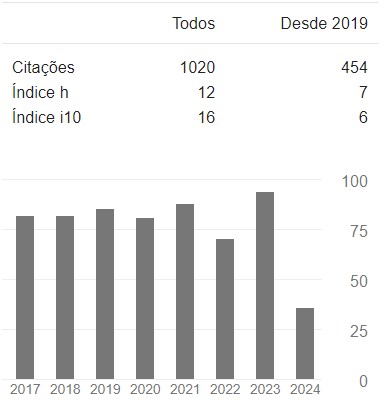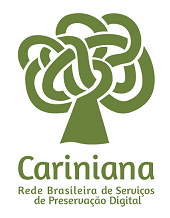Adaptação e grotesco em Padre Amaro: Eça de Queirós e Paula Rego
DOI:
https://doi.org/10.5433/1678-2054.2022v41p7Palabras clave:
Adaptação, Grotesco, Paula Rego, Crime do Padre Amaro.Resumen
Este trabalho compara as configurações e reconfigurações do grotesco na obra O crime do Pe. Amaro, de Eça de Queirós, e na adaptação que a artista plástica Paula Rêgo faz em uma série homônima de dezesseis quadros. A partir das reflexões sobre teoria da adaptação em Linda Hutcheon e Robert Stam, comparamos as obras de Eça de Queirós e Paula Rego. No livro, a comparação se estabelece a partir das descrições de algumas personagens da obra, enquanto nas telas a interpretação se realiza a partir de uma ampliação de alguns temas desenvolvidos pelo autor, além de uma adequação ao contexto de produção dessas obras na contemporaneidade. A perspectiva comparativa é a do grotesco, seja através da interpretação das cores, da corporeidade das personagens e até do fundo das telas. O trabalho é embasado nas teorias do grotesco desenvolvidas por M. Bakhtin e Victor Hugo. A leitura a partir da teoria da adaptação e do grotesco nas obras possibilita um enriquecimento de ambas as obras, seja em seus contextos socioculturais específicos, sincrônicos, seja em um panorama cultural mais abrangente, diacrônico.
Descargas
Citas
BERGSON, Henri. O riso: Ensaio sobre a significação da comicidade. São Paulo: Martins Fontes, 2001.
CASA DAS HISTÓRIAS PAULA RÊGO. Disponível em: http://www.casadashistoriaspaularego.com/pt/.
BORGES, Jorge Luís. Esse ofício do verso. Trad. José Marcos Macedo. Calin-Andrei Mihailescu, org. São Paulo: Cia das Letras, 2000.
FERREIRA, Emília. As Avestruzes bailarinas de Paula Rêgo ou a queda de Ícaro. A Dança e a Música nas Artes Plásticas do Século XX. Margarida Acciaiuoli & Paulo Ferreira de Castro, coords. Lisboa: Edições Colibri, IHA/Estudos de Arte Contemporânea, 2012.
HUGO, Victor. Do grotesco e do sublime: prefácio de Cromwell. Trad. Célia Berretini. São Paulo: Perspectiva, 2007.
HUTCHEON, Linda. Uma teoria da adaptação. 2. ed. Trad. André Cechinel. Florianópolis: Editora da UFSC, 2011.
KAYSER, Wolfgang. O grotesco: configuração na pintura e na literatura. Trad. Jacó Guinsburg. São Paulo: Perspectiva, 2013.
LIMA, Isabel Pires de. Eça, o realismo e a pintura: “uma prosa como ainda não há”. Metamorfoses, Rio de Janeiro, v. 13, n. 1, p. 34-48, 2015. Disponível em: https://revistas.ufrj.br/index.php/metamorfoses/article/view/5073.
LIMA, Isabel Pires de. Ser fêmea: duplicidade identitária em O crime do Padre Amaro, de Paula Rêgo. Cadernos de Literatura Comparada, Porto, n. 3-4, p. 107–143, 2005. Disponível em: https://ilc-cadernos.com/index.php/cadernos/article/view/60.
QUEIRÓS, Eça de. O crime do Padre Amaro. 10. ed. São Paulo: Ática, 1997.
RÊGO, Paula. O Crime do Padre Amaro. Lisboa: Centro de Arte Moderna Azeredo Perdigão e Fundação Calouste Gulbenkian, 1999.
SILVA, Alexandra Sofia dos Santos Rodrigues da. As representações na pintura O Crime do Padre Amaro de Paula Rêgo: processo criativo e apreciação estética. Tese (Ciências e Tecnologias da Saúde), Universidade de Lisboa, 2018. Disponível em: http://hdl.handle.net/10451/38765.
SILVA, Antonio Garcez da. A pintura na obra de Eça de Queiroz. Lisboa: Caminho, 1986.
STAM, Robert. Teoria e prática da adaptação: da fidelidade à intertextualidade. Ilha do Desterro, Florianópolis, n. 51, p. 19-53, 2006. Disponível em: https://doi.org/10.5007/2175-8026.2006n51p19.
Descargas
Archivos adicionales
Publicado
Cómo citar
Número
Sección
Licencia
Derechos de autor 2022 Terra Roxa e Outras Terras: Revista de Estudos Literários

Esta obra está bajo una licencia internacional Creative Commons Atribución 4.0.
Los autores que publican en esta revista aceptan los siguientes términos:
a) Los autores conservan los derechos de autor y otorgan a la revista el derecho de primera publicación, siendo la obra licenciada simultáneamente bajo la Licencia Creative Commons Reconocimiento-No Comercial 4.0 Internacional, permitiendo la compartición de la obra con reconocimiento de la autoría de la obra y publicación inicial en este periódico académico.
b) Los autores están autorizados a asumir contratos adicionales por separado, para distribución no exclusiva de la versión del trabajo publicado en esta revista (por ejemplo, publicar en un repositorio institucional o como capítulo de libro), con reconocimiento de autoría y publicación inicial en esta revista. diario.
c) Se permite y anima a los autores a publicar y distribuir su trabajo en línea (por ejemplo, en repositorios institucionales o en su página personal) después del proceso editorial, ya que esto puede generar cambios productivos, así como aumentar el impacto y la citación del trabajo publicado (Ver Efecto del Acceso Abierto).
d) Los autores de los trabajos aprobados autorizan a la revista para que, luego de la publicación, transfiera su contenido para su reproducción en indexadores de contenido, bibliotecas virtuales y similares.
e) Los autores asumen que los textos sometidos a publicación son de su creación original, asumiendo total responsabilidad por su contenido en caso de objeción por parte de terceros.





















